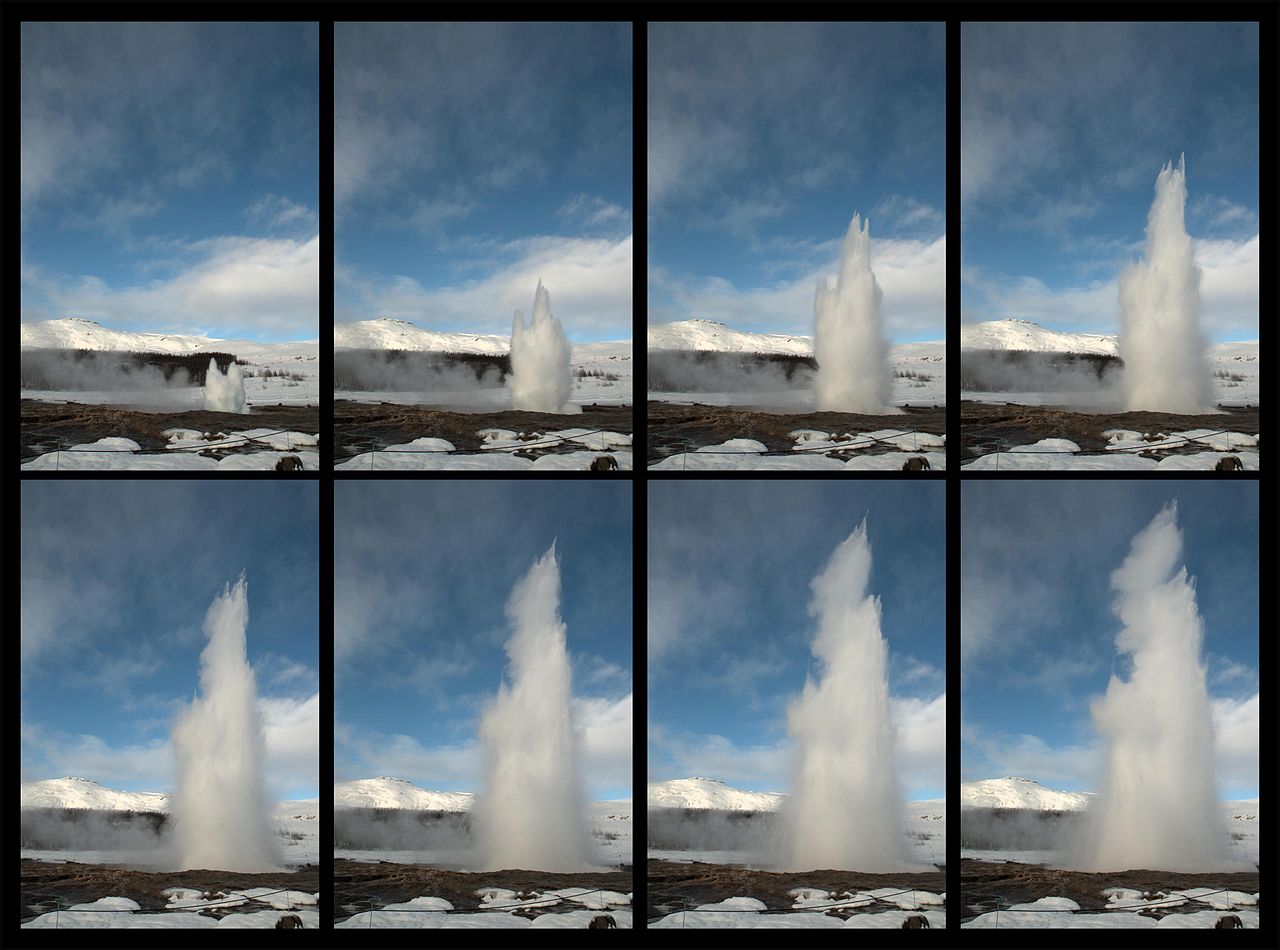One of the most famous geysers in the world is called Old Faithful. Old Faithful is a cone geyser (discussed on the next page) located in Yellowstone National Park, which spans regions of Wyoming, Montana, and Idaho. The main reason why Old Faithful is so well know is explained in its name: it regularly shoots out water. Old Faithful erupts every 45-125 minutes and shoots out 3,700 to 8,400 gallons of boiling water over a time ranging from 1.5 to 5 minutes. The max height the water reaches is usually between 106 to 185 feet!
Another famous geyser located in
Haukadalur, a valley containing a geothermal hot spot in
Iceland, is called Geysir or The Great Geysir (the
word geyser originated from the Icelandic word "geysir")
(12 World Famous Geysers). Geysir is currently known to
magnificently erupt about three times per day usually
shooting boiling water as high as 230 feet in the air.
Geysir, like the majority of geysers, can be very
inconsistent and has gone through periods where it did not
erupt for years at a time.
The final
geyser that will be discussed is an example of how human
interaction with nature can sometimes cause something
remarkable. The Fly Geyser was created in the early 1900's
when someone was drilling an agricultural well and ended up
hitting a reservoir of superheated water. Over the years, as
mineral rich water spewed from this hole in the ground, it
built the "cone" in the pictures to the left. The colors you
see on the Fly Geyser are caused by a combination of the
bacteria that thrive in high temperature water and the
minerals in the ground. The Fly Geyser is located on a
privately owned ranch, the Fly Ranch, in Nevada.

